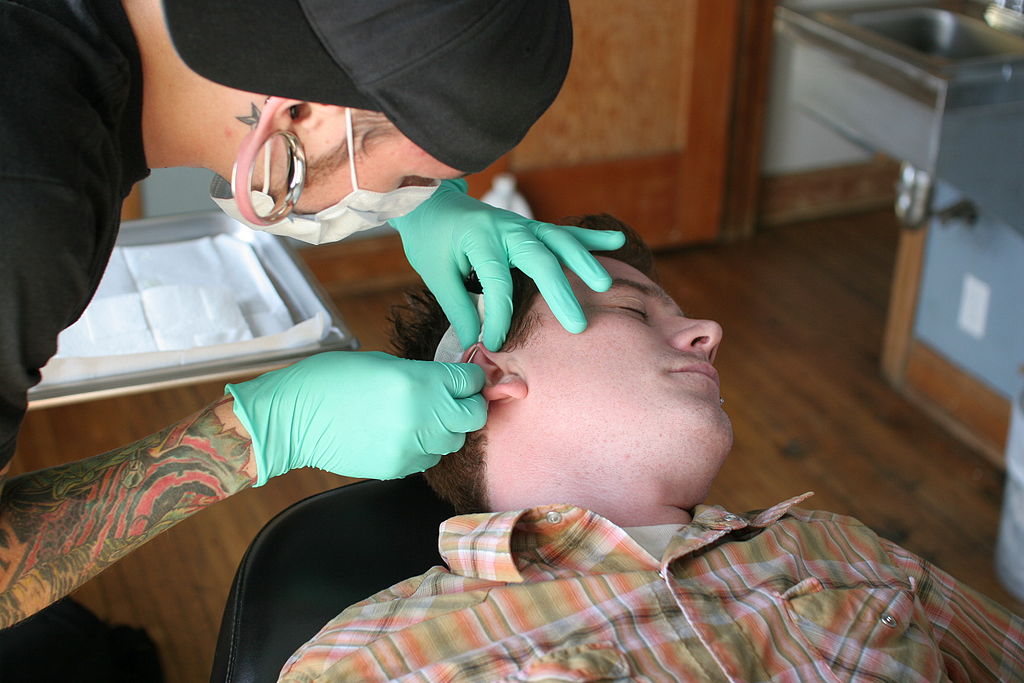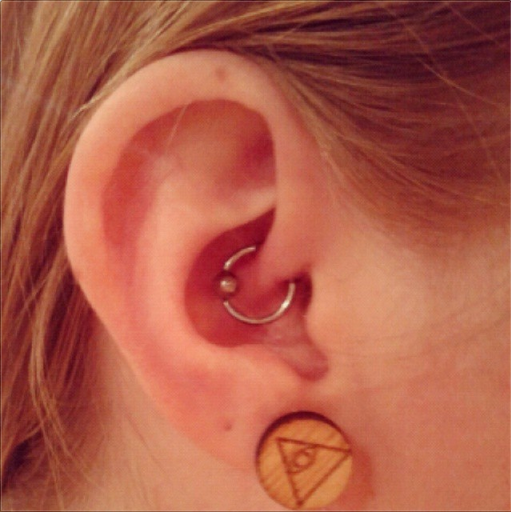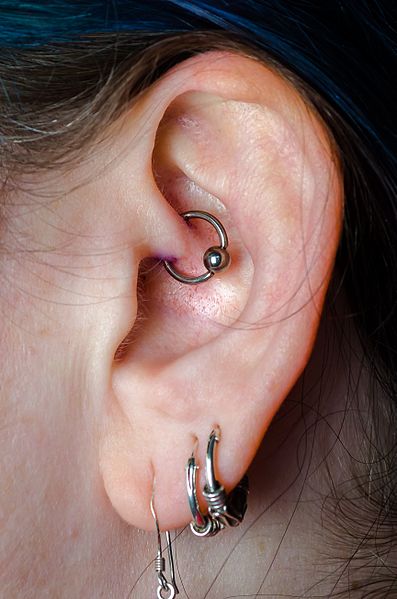Thinking of getting a daith piercing? The procedure for the piercing may seem very simple but it is actually complicated. You need an experienced piercer to do it to avoid any infection that may require surgery to correct it. In addition, this kind of cartilage piercing also requires a precise perforation using a curved and specially designed needle.

Make sure a professional piercer will do your daith piercing.
However, when done perfectly, this type of piercing can make you extremely stunning.
What is daith piercing?

Daith piercing is a ring pierced into your ear cartilage near the ear canal.
As an ear cartilage piercing, not everyone can have a daith piercing. The client’s anatomy will tell if it is possible to have this kind of piercing. The ear must have ample room for a bar or ring pierce above the ear canal.
The procedure can be painful. Small, looped earrings or sometimes studs are pierced through a firm cartilage fold. A daith piercing passes through the innermost fold called the Daith (it rhymes with faith or also pronounced as “doth”) just beneath the rook and near the ear canal.
Some clients can be very outrageously stunning and elegant with a double piercing. When the cartilage fold allows for two perforations, double spiral rings are perfect for this style. Or multiple piercings can be made if there’s ample space for triple piercing.
Why get a daith piercing?
Daith piercing has become a fashion trend especially among people who are obsessed with ear cartilage piercing. LA’s famous and trendsetter in the piercing business, Brian Keith Thompson couldn’t be wrong when he said that daith piercing is really cool!
Aside from being a fashion trend, daith piercing is gaining popularity among people with chronic migraines. They reported that after having the piercing, the occurrence of an intense headache has been reduced or prevented.
Some advocates recommend it as an alternative migraine treatment. They consider it as similar to how acupuncture works where discomfort is lessened when the pressure points are targeted. However, no conclusive scientific studies or evidence have proven that daith piercing reduces migraine pain.
Does a daith piercing hurt?
Yes, it can be painful. Remember that it is done in a curvy place with a hollow needle so the client may feel a burning pain the moment the needle is pulled out. In a little while, the pain will subside.
Bleeding can occur which is just normal for any raw pierced cartilage. But this is nothing to be alarmed of.
Because it is a cartilage piercing, the daith piercing can heal longer. It will usually take 8 to 16 weeks to completely heal.
If it takes longer for wounds to heal, BioFlex daith piercing jewelry is recommended to hasten the healing process.
What does daith piercing jewelry look like?
To get the best look that you want, choose a good piercing jewelry especially a daith ring. It comes in various materials. Accessorizing with clip-in or threaded body jewelry can result in a different stylish look.
A daith piercing depends entirely on one’s anatomy. The cartilage fold must be strong and firm enough to hold the jewelry. Thin daith piercing uses micro jewelry having 16 to 18 gauges.

A perfect daith piercing jewelry size must be just a bit thicker than the cartilage fold
Most clients prefer a ball closure ring that must be a little thicker than cartilage fold.
On the other hand, curved barbells take less space so it’s also a good option. But be careful because sometimes it can get snagged on beddings, clothes or combs because it has a longer post than the pierced tissue.
Captive bead ring can snugly fit on the piercing and it is easy to adjust. It is very ideal especially during the healing period because it allows more room for swelling and does not block any discharge such as pus or blood.
Small hearts and moon jewelry can be used for daith piercing jewelry, too When the pierced area has completely healed, you can use large gauge jewelry with proper barbell size.
How to clean a daith piercing?
Make sure that the pierced area is always clean to avoid any infection or complications. Some people may experience swelling, redness and soreness. When this becomes severe, seek doctor’s help.
Jewelry rejection can also occur when irritation and pus discharge starts. Immediately have a professional piercer remove the jewelry to avoid pierce migration.
- As a general rule to all piercings, always wash your hands properly before touching the piercing. Use an antibacterial soap containing triclosan or chloroxylenol.
- Bacteria can start in your piercing so always clean it at least once a day.
- Clean the pierced area with plain water and put a couple of drops of antibacterial soap on the piercing. Then, lather it using a cotton bud.
- With a cotton bud, loosen any dry discharge off the daith piercing jewelry and your skin. Do not pick it off.
- Allow the antibacterial soap to soak the piercing for at least a minute or two while gently rotating the jewelry.
- Rinse with clean water and allow air-drying. Never use a towel to dry the daith piercing. It may contain bacteria that can start an infection.